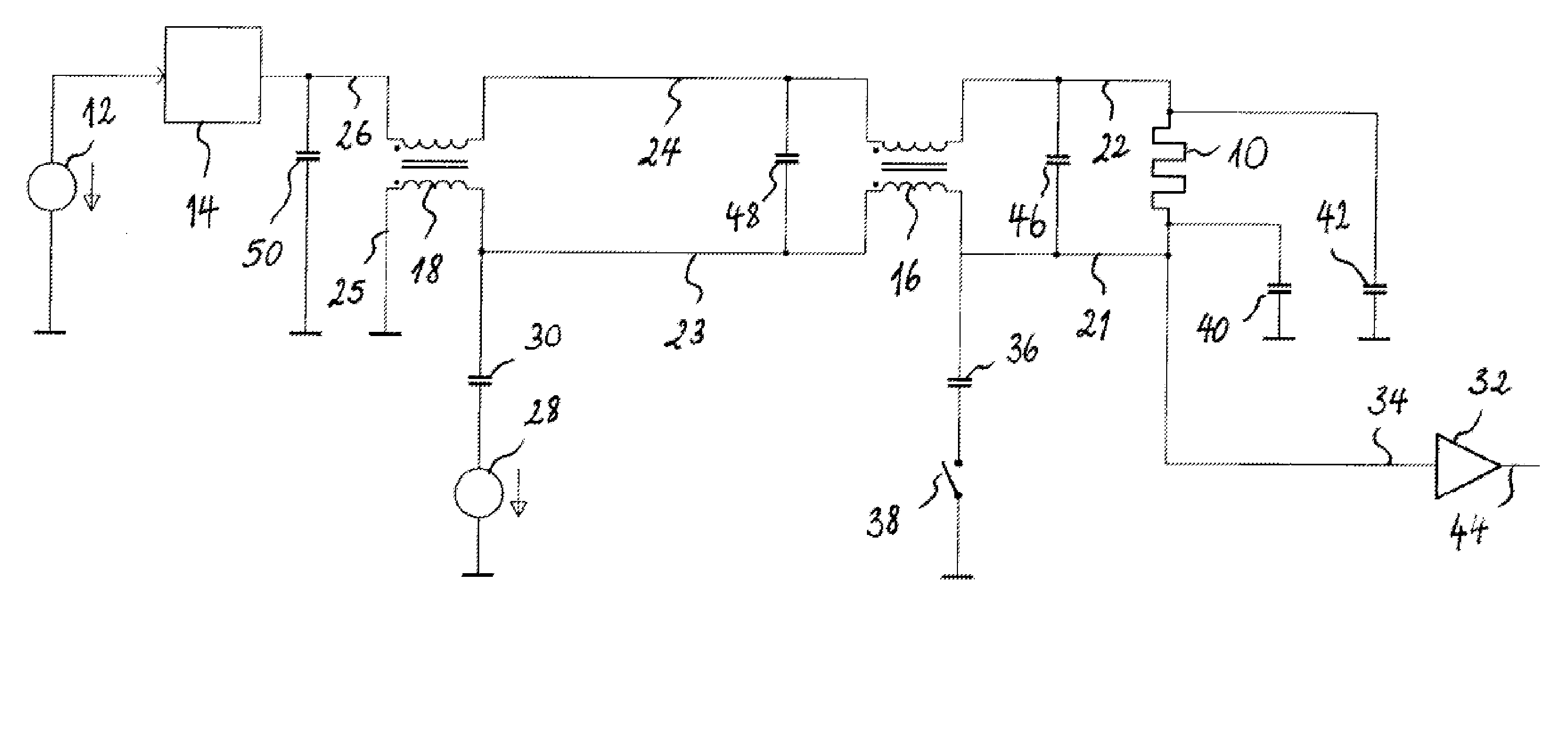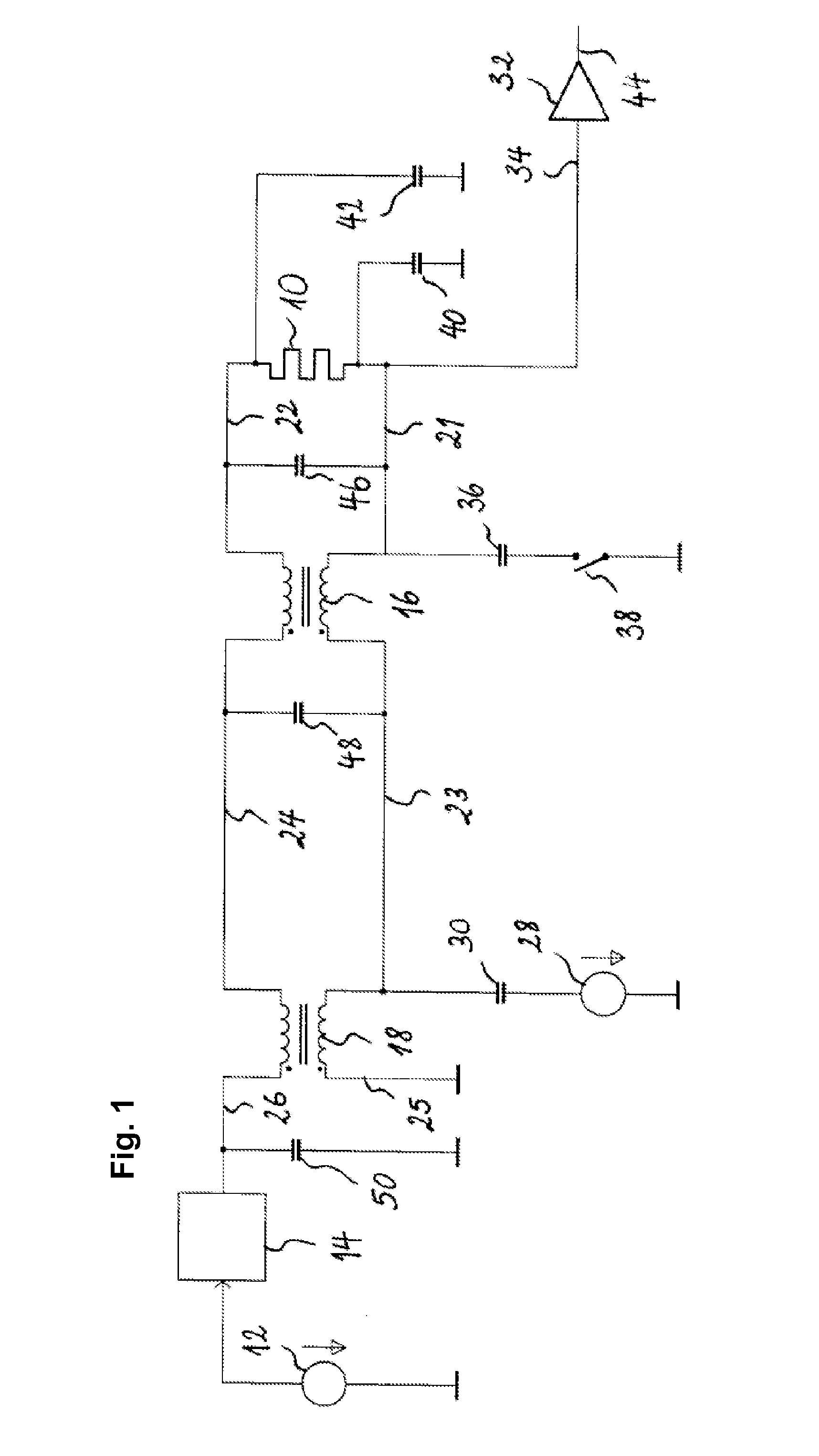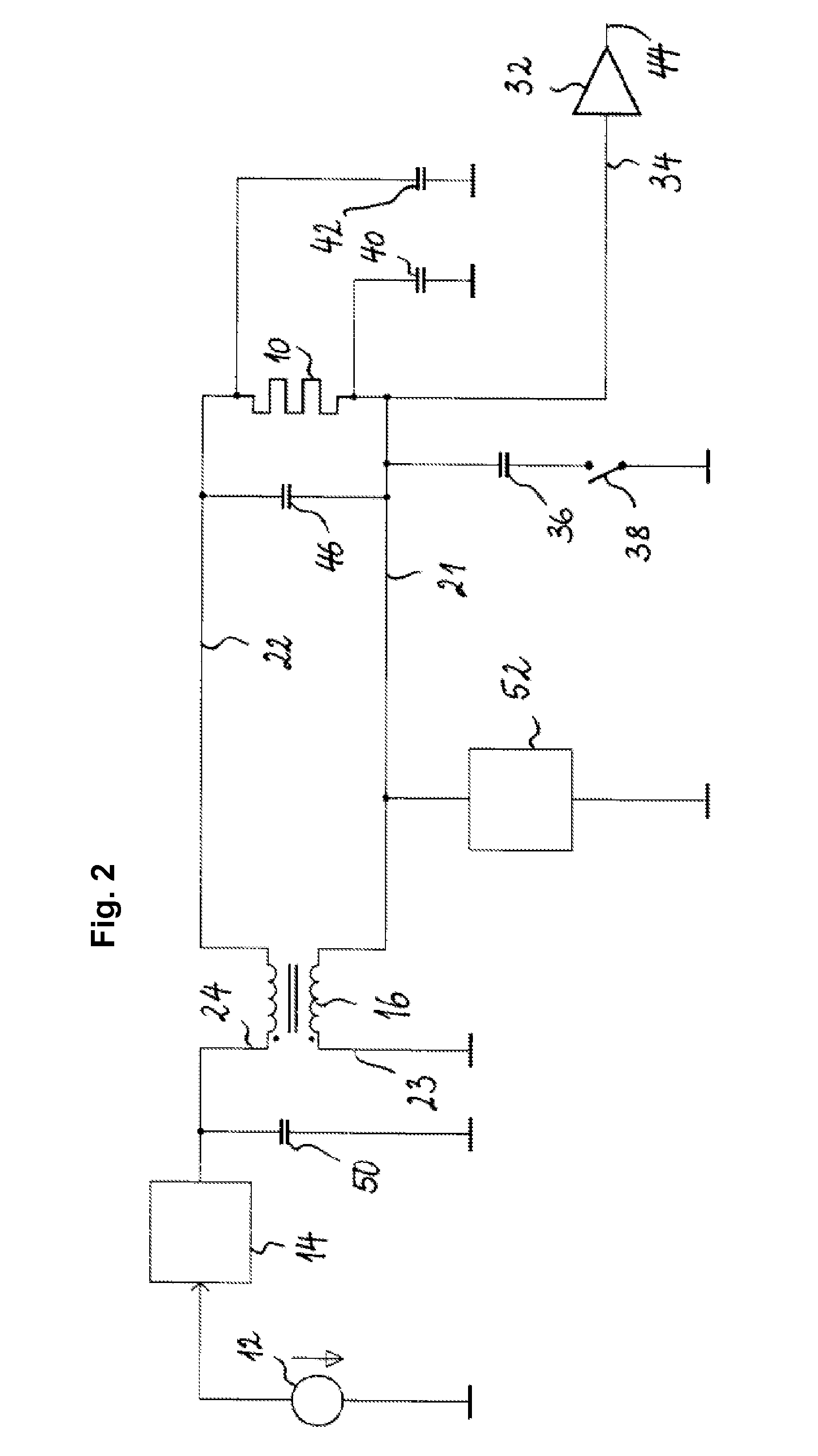Seat heater and capacitive occupancy sensor combination
a capacitive measurement circuit and seat heater technology, applied in the direction of pedestrian/occupant safety arrangements, transportation and packaging, etc., can solve the problems of large cores of inductor wound on the inductor, the device may not operate in sensing mode and heating mode, and the capacitive measurement circuit and seat heater at the same time. , to achieve the effect of improving detection performance and cost-efficient manufactur
- Summary
- Abstract
- Description
- Claims
- Application Information
AI Technical Summary
Benefits of technology
Problems solved by technology
Method used
Image
Examples
first embodiment
[0036]FIG. 1 shows a block schematic diagram of a combined seat heater and capacitive occupancy sensor according to the invention. The seat heater comprises a heating element 10, which is used by the capacitive occupancy sensor as an antenna electrode, which capacitively couples to ground. The strength of the capacitive coupling between the heating element 10 and ground depends on whether an occupant is present in the zone between the heating element 10 and the grounded counter-electrode. In a loading-mode capacitive occupancy sensor for a vehicle seat, the grounded counter-electrode normally corresponds to the vehicle chassis.
[0037]Turning first to the seat heater, the heater network includes power source 12 supplying the required DC heating current to the heating element 10 to perform the heating function. The heater network comprises a switch 14, which turns the DC heating current on and off, depending on the actual and required temperature of the seat heater. The switch 14 may e...
second embodiment
[0053]FIG. 2 shows a block schematic diagram of a combined seat heater and capacitive occupancy sensor according to the invention. Elements common to the embodiments of FIG. 1 and FIG. 2, having the same or substantially the same function, have been given the same reference numbers in FIG. 2. As in the previously described embodiment, the seat heater comprises a heating element 10, which is used by the capacitive occupancy sensor as an antenna electrode, which capacitively couples to ground. The capacitance to be measured by the capacitive sensing network is again symbolically represented as capacitors 40 and 42.
[0054]In the heater network of the embodiment of FIG. 2, the heating element 10 is connected between a first 21 and a second 22 node. The heating element 10 is operatively connected to the power source 12 with a common mode choke 16 that connects the first 21 and the second 22 node to a third 23 and a fourth 24 node, respectively. In FIG. 2, the third node 23 corresponds to ...
third embodiment
[0072]FIG. 5 shows a block schematic diagram of a combined seat heater and capacitive occupancy sensor according to the invention. Elements common to the embodiments of FIG. 2 and FIG. 5, having the same or substantially the same function, have been given the same reference numbers in FIG. 5. As in the previously described embodiments, the seat heater comprises a heating element 10, which is used by the capacitive occupancy sensor as an antenna electrode, which capacitively couples to ground. The capacitance to be measured by the capacitive sensing network is again symbolically represented as capacitors 40 and 42. In the figures described in the following, the reference capacitor and its switch are not shown. Those skilled will appreciate, however, that such reference capacitor or other reference component could be used in the same manner as discussed with respect to FIG. 2.
[0073]In the embodiment of FIG. 5, an AC source 74 supplying an AC current into the resonant network, operatin...
PUM
 Login to View More
Login to View More Abstract
Description
Claims
Application Information
 Login to View More
Login to View More - R&D
- Intellectual Property
- Life Sciences
- Materials
- Tech Scout
- Unparalleled Data Quality
- Higher Quality Content
- 60% Fewer Hallucinations
Browse by: Latest US Patents, China's latest patents, Technical Efficacy Thesaurus, Application Domain, Technology Topic, Popular Technical Reports.
© 2025 PatSnap. All rights reserved.Legal|Privacy policy|Modern Slavery Act Transparency Statement|Sitemap|About US| Contact US: help@patsnap.com



